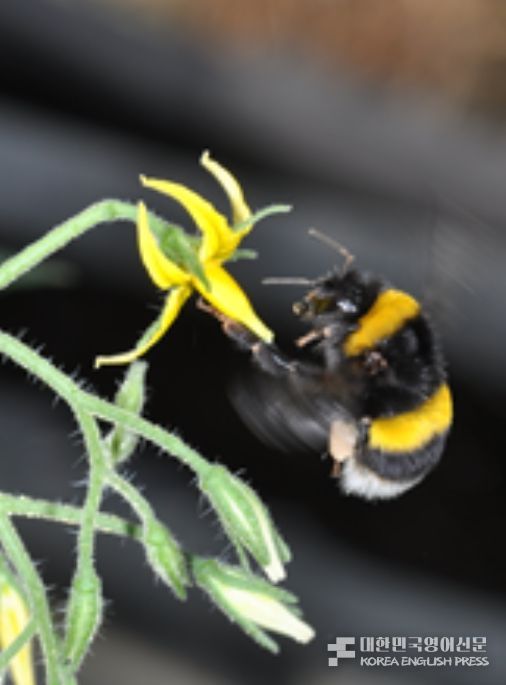
On February 27, Kwon Jae-han, head of the Korea Rural Development Administration, visited a smart bee producer in Buyeo, Chungcheongnam-do, South Chungcheong Province, to check the production status, and then visited a farmer who uses bees to grow cherry tomatoes to see the effectiveness of bee pollination.
The company that Commissioner Kwon visited received the mass breeding technology for honey bees developed by the Korea Rural Development Administration and participated in a pilot project for new smart breeding facilities, producing 20,000 bee swarms (bongun) annually.
After inspecting the site where the bee production environment is precisely controlled by smart technology, Kwon held a meeting with bee producers, young farmers, and local government officials to discuss areas for improvement in bee production technology and support measures.
At the meeting, Kwon emphasized that the agency is introducing smart technology that effectively produces high-quality honey bees and establishing a system of system development and distribution to supply high-quality queen bees. He also promised to continue to develop and support customized technologies needed by honey bee production sites.
He then visited farmers who grow cherry tomatoes by applying the standardized honeybee utilization technology developed and supplied by the Rural Development Administration to examine the effectiveness of using honeybees and the supply and demand situation of farmers.
Since tomatoes are a non-wheat crop, bees cannot be used for pollination. By using honey bees for pollination, which was previously done by hand, the farmers were able to reduce labor costs by 54% and increase productivity.
“We are developing and distributing the technology to stably produce crops with honey bees to the field so that crop production will not be disrupted due to the recent loss of bees,” said Kwon. ”We will take the lead in research and technical support to solve difficulties in the agricultural field.”
The Rural Development Administration developed the honey bee production technology in 2002 and has transferred the technology to 20 companies so far. In addition, the agency has developed a 'smart bee breeding technology' that manages the entire bee breeding process through mobile phones and controls the environment in detail and is being distributed to bee producers. As a result, the average productivity of the producers' honey bees has increased by 15 percent, resulting in a 7.1 percent increase in supplementary income.
“Unlike honey bees, honey bees can be mass-produced all year round and are in high demand due to their high pollination efficiency in limited spaces such as facility cultivation and vertical farms,” said Kwon Jae-han, head of the Korea Rural Development Administration. ”We will actively collect technology demands from farmers, who use an average of 230,000 honey bee hives a year, and further strive to develop and distribute breeding technologies and facilities that can increase productivity and reduce costs compared to artificial pollination.”
[News source: Korea Rural Development Agency].























